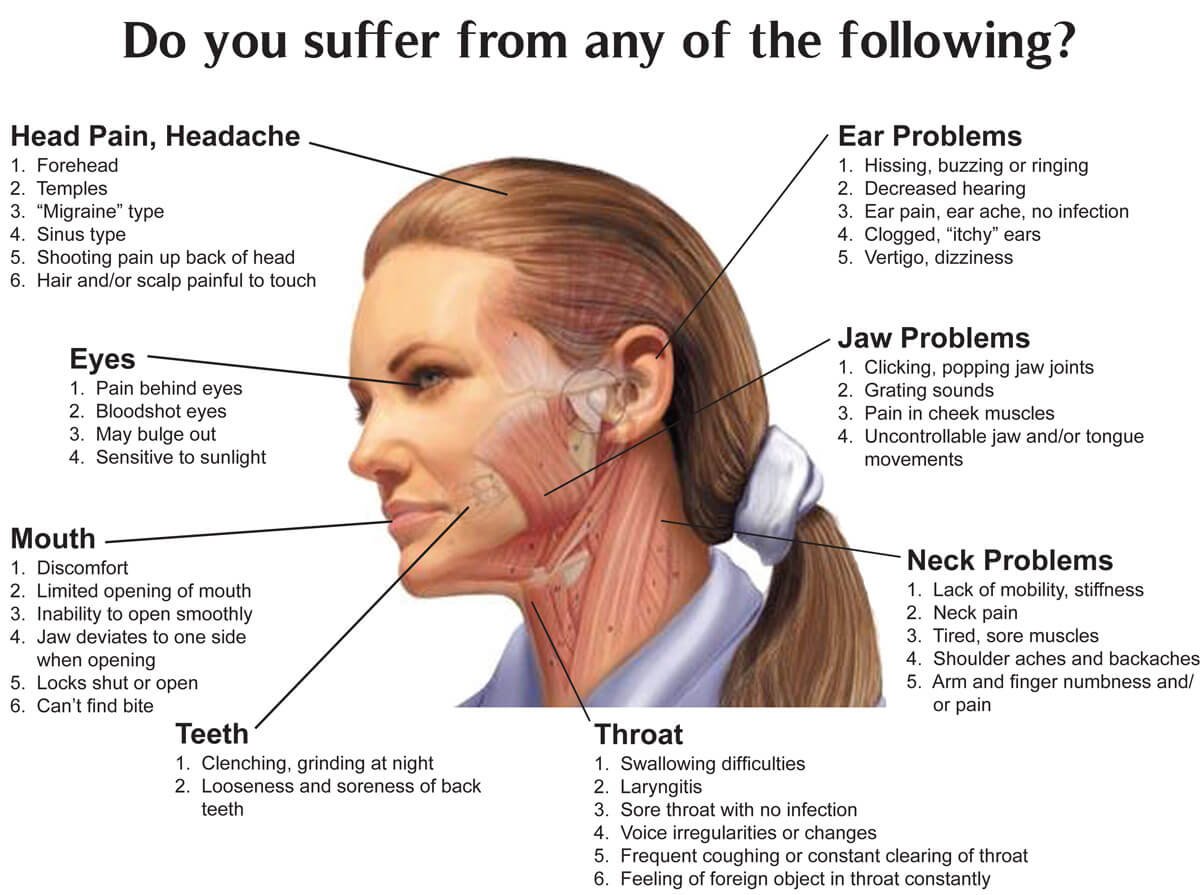Temporomandibular joint disorders (TMJ) often develop symmetrically, in both jaw joints at the same time. However, it is possible for people to develop the disorder and experience symptoms on just one side of the head. However, as the condition progresses, it will likely spread to affect the other joint as well.
Symptoms of TMJ
Why TMJ Might Develop on Just One Side
The temporomandibular joints are supposed to work as a matched pair, balancing forces in a way that maintains healthy function over the long term. It’s also possible that they can become unbalanced, leading to dysfunction on just one side of the face.
Jaw Pain
Usually, trauma is the cause of imbalance. If you experience a blow to one side of the face, you might experience damage to the jaw joint, which can cause dysfunction. Of course, sometimes this isn’t the side that starts to show symptoms. After you start to experience jaw pain on one side, it’s not uncommon to favor that side. You might consciously chew on the other side of your mouth, which can lead to jaw damage and muscle soreness there.
Another reason for the imbalance in jaw joint damage is simply that you might strongly favor one side of your jaw over the other. Similar to handedness, some people have a tendency to chew mostly on one side of their mouth, which can stress the jaw joint, leading to dysfunction. With a habit like gum chewing, it’s possible to do a lot of damage to your jaw joint when favoring one side over the other. Unconscious clenching and grinding (bruxism) can also be governed by your tendency to favor one side over the other, and because you might clench with 50 times the force or more than you normally chew with, damage can escalate quickly.
Jaw joint damage might be more directly linked to handedness, too. If you are strongly right-handed, for example, you might be more likely to put objects into your mouth on the right side, and biting down on these pens, pencils, fingernails, and other objects can damage your jaw joint (not to mention your teeth!).
Symptoms Will Likely Spread
So, yes, it is possible to develop TMJ on just one side of the face. However, the condition probably won’t stay isolated like that. After all, the two joints do work together, and what affects the one will affect the other, though often in an inverse way. If you are compressing one jaw joint, you might be expanding the other. This causes stress, too, though it might not be obvious at first.
When you bite, chew, and grind on one side of the mouth, you can cause the teeth to wear down there much faster than on the other side. This can cause your jaw to tilt visibly, creating an uneven facial appearance. Not only that, but eventually the stretching force will lead to dysfunction in the decompressed joint.
You might also spread dysfunction in the same way you developed it on the first side: by compensating. If one jaw joint is causing you pain such as headaches, you can switch over to the other side to avoid the pain. This might work, but over time both joints can develop TMJ symptoms.
Correct Problems Before Symptoms Spread
Fortunately, TMJ is treatable. And if you’re experiencing symptoms on just one side of your face, treatment can head off the spread of those symptoms.
If you are looking for treatment of TMJ in the Sydney area, please call 02 9558 8988 today for an appointment with Dr Chong in Hurlstone Park or email us at info@painfreedentistsydney.com.au

